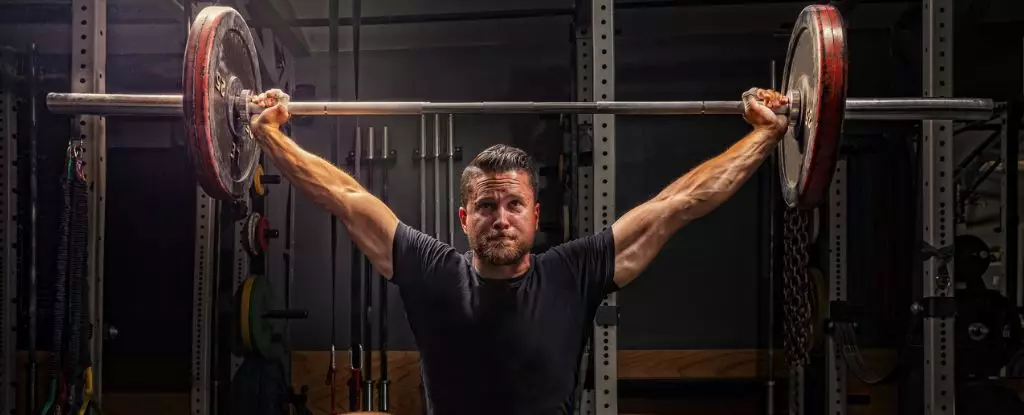In 2021, the bodybuilding community was rocked by an alarming wave of untimely deaths among elite athletes, a grim statistic that caught the world’s attention and ignited urgent conversations about the inherent dangers of this celebrated sport. While athletes are often perceived as paragons of health and vitality, the reality for many bodybuilders paints a starkly different picture. The loss of over two dozen professional bodybuilders within a single year, some as young as 27, serves as an unsettling reminder that underneath the sheen of muscle and dedication lies a perilous and often disregarded struggle for life and health.
Bodybuilding, often hailed for promoting discipline and physical excellence, has become a double-edged sword. Despite widespread research suggesting that elite athletes generally enjoy longer lifespans compared to the average individual, this poignant tragedy has raised a critical question: at what cost does the pursuit of physical perfection come? The recent study conducted by scholars at the University of Padova has highlighted this somber reality, revealing an unsettling correlation between elite bodybuilding and an elevated risk of sudden cardiac events.
Understanding the Risks
The findings of this groundbreaking study, which tracked over 20,000 male bodybuilders over eight years, offer a sobering glimpse into the often-overlooked health hazards plaguing the sport. The data collected revealed 73 cases of sudden death among this group, with a concerning mean age of just 42. Heart failure was alarmingly prevalent, indicating that while the sport has many benefits, it also harbors catastrophic health risks that cannot be ignored.
The authors of the study pinpointed a stark contrast in risk levels between elite and amateur bodybuilders, noting that the risk of sudden heart failure among the highest echelon of competitors was over 14 times greater than that of their less seasoned counterparts. This clear demarcation of risk underscores an urgent issue: as the sport intensifies, so too does the danger involved, raising questions about the pressures and practices that accompany competitive bodybuilding.
The Death Toll: A Signal for Action
Research into this phenomenon has unveiled glaring deficiencies in athlete safety measures, particularly within the realm of elite bodybuilding competitions. Disturbingly, out of just 100 athletes in the prestigious Mr. Olympia open category, seven succumbed to sudden and unexplained deaths. These numbers are not just statistics; they reflect the gruesome reality that these elite athletes face. Five of these deaths were attributed to sudden cardiac events, occurring at a shocking average age of just 36. This is a wake-up call that demands immediate action from sports organizations, medical associations, and the bodybuilding community as a whole.
When examining the adverse health outcomes of bodybuilding, it becomes evident that extreme training regimens, restrictive diets, and the rampant use of performance-enhancing substances present dire consequences for heart health. Marco Vecchiato, the lead researcher on the study, asserts that the pursuit of muscular aesthetics and outstanding performance can have serious implications, stressing that many bodybuilders may unknowingly jeopardize their cardiovascular integrity in their quest for greatness.
The Inevitable Paradox
As gruesome as these revelations may be, they are symptomatic of a larger issue within the world of sports—one where the obsession with physical excellence can overshadow the essential need for athlete well-being. The bodybuilding culture often glamorizes extreme measures for attaining the “perfect” physique, promoting unhealthy behaviors as aspirational traits. Anecdotal evidence and the small proportion of autopsies that have taken place reveal a broader pattern; larger hearts and thickened left ventricles are all too common findings. It raises a profound question about the ethos embedded within the sport: When does the pursuit of excellence transform into a deadly obsession?
In an environment that prioritizes visible success over health, discussions must shift to champion the well-being of competitors. The call for preventive measures, such as the incorporation of automated external defibrillators during competitions, cannot be rationalized as mere protocols but should be seen as vital lifelines for those willing to risk everything for their sport. The need for comprehensive research into the cardiovascular implications of bodybuilding practices is undeniable, and there must be a concerted effort to educate athletes about mitigating the risks associated with extreme training and dietary practices.
In essence, the bodybuilding world must confront its harsh reality—the quest for an ideal physique not only bears psychological burdens but can impose catastrophic physical consequences. The celebration of strength must be tempered with a commitment to the heart health of athletes, for without it, the tragedy may become a haunting legacy that defines the sport.


Leave a Reply